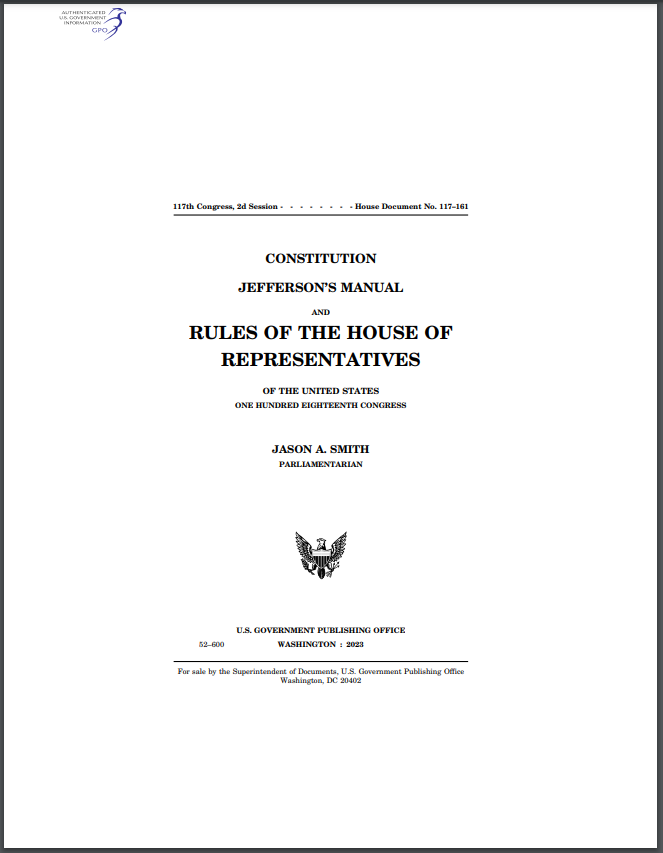
You cannot really understand the House of Representatives without some familiarity with its rules. They affect everything—who acts as leaders, how work is divided up, how things get done, etc.
And oh boy, the House has a lot of rules, a topic that was discussed a recent congressional hearing.
If you want to begin to understand the House’s rules, there are three places you should look.
House Rules
The U.S. Constitution says very little about how the House should operate. It requires legislators to choose a Speaker, and has some rules about spending bills, but otherwise allows the House and Senate to create their own rules. Over the centuries, the House has built a big corpus of rules. It has done this by voting these rules into effect. Below is the corpus of rules in effect as of 2023.
You may locate the most recent copy of the Rules of the House of Representatives by visiting the House Rules Committee’s website, surfing to GovInfo.gov’s House Rules and Manual page, or Googling “Rules of the House of Representatives”.
And I would be remiss if I failed to mention two additional sources: the congressional budget rules that have been enacted by statute, which you can find in the back of the above volume; and the Precedents of the U.S. House of Representatives, which compiles interpretations of House rules.
Alterations to House Standing Rules (AKA House rules package)
Inevitably, the majority of the House starts each session by voting on a rules package. This document amends or augments the existing rules. It tends to be a partisan exercise—whichever party has a majority will draft the new rules then vote them into effect. The other party usually votes against them. Here are the alterations that were adopted in January of 2025 when the 119th Congress began. (By the way, no, neither the Senate nor the President have any role in this process.)
You can find the most recent rules package by surfing to Congress.gov and searching for “H. Res. 5” or “Adopting the Rules of the House of Representatives”.
Party Rules
Each party in the chamber draws up their own rules before the start of a new Congress. Think of these as similar to the rules of a club. So there are two documents, the Democratic Caucus Rules and the Republican Conference Rules.
Lots of these rules are internal—they focus on how the Democrats will run their private meetings, or how the Republicans will pick their Speaker and other leaders. Below are copies of these rules from December 2024, when both parties gathered in Washington, DC after the election and hashed them out and adopted them.
But these rules also affect how the chamber operates because they aim to bind party members. So, for example, has a rule curbing the use “suspension of the rules” to move bills and declares “no member shall request an earmark.” These party rules often posit policy ideas to guide the party. Sticking with the Republican example, the most recent GOP conference rules state, “authorizing committees shall… seek opportunities to move… mandatory programs with automatic funding streams to the annual appropriations process.” Translation: entitlement spending should not increase each year without Congress voting on said increases.
Locating party rules is not difficult, usually. Simply Google “Rules of the House Democratic Caucus“ and “House Republicans conference rules” (or “House Republicans conference resolution”).
Of course, very few people know all of these rules. But becoming familiar with some of them will help you better understand why the House of Representatives behaves as it does.
Kevin R. Kosar (@kevinrkosar) is a senior fellow at the American Enterprise Institute and edits UnderstandingCongress.org.
Stay in the know about our news and events.